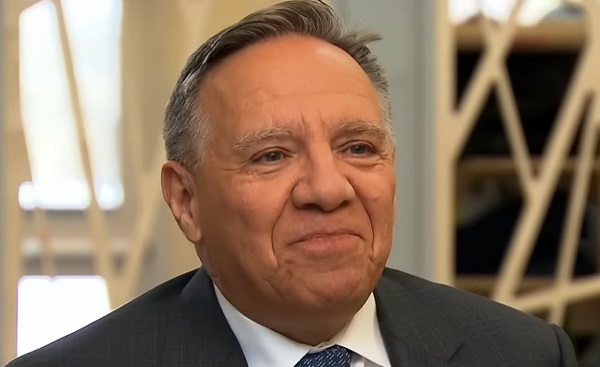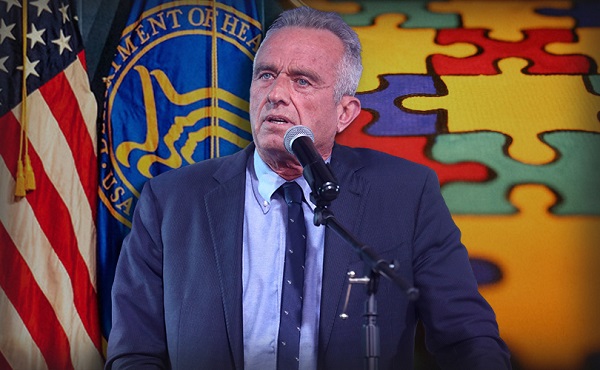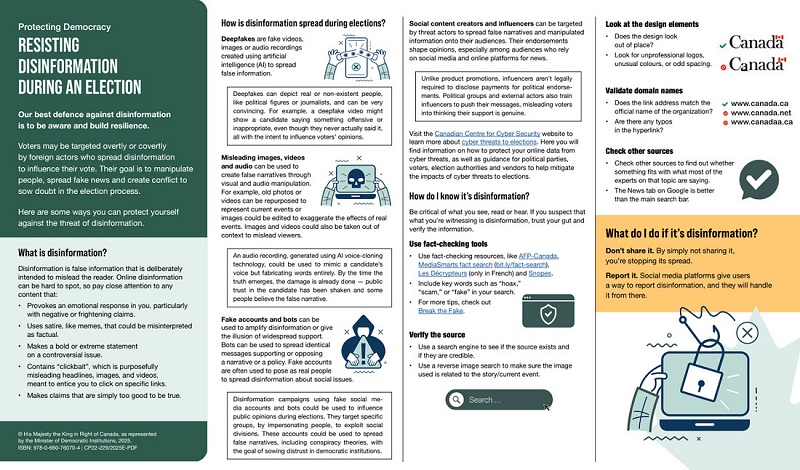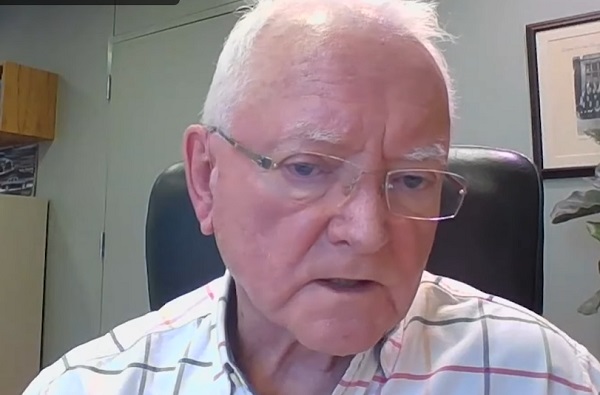National
New Quebec bill would prohibit teachers, school staff from wearing a crucifix

From LifeSiteNews
‘In Quebec, we made the decision that the state and the religions are separate and today we say the schools, the public schools are separate from religion’
The Canadian province of Quebec is moving ahead to expand its so-called religious symbols ban to now include all school staff, meaning no one who works at a school would be allowed to wear crucifixes or crosses of any kind.
On March 20, the Quebec provincial government of Premier François Legault tabled a bill which, if passed, would expand the province’s current religious symbols ban to stop “any religious indoctrination.”
“In Quebec, we made the decision that the state and the religions are separate and today we say the schools, the public schools are separate from religion,” said Minister of Education Bernard Drainville to reporters Thursday.
The new bill would update Quebec’s Education Act and would mandate that all students and staff at schools have their faces uncovered. It would also mandate teachers submit all of their educational plans to school principals so that they could be evaluated each year.
According to Drainville, the “idea” of the new bill is “to protect students from any religious indoctrination.”
He said, “If we are going to be coherent with this idea that a figure of authority should not wear a religious symbol, well, any adult can be a figure of authority and therefore no adults who are working within the school system should be allowed to wear a religious symbol.”
The Chair of the English Montreal School Board, Joe Ortona, blasted the bill as “a smokescreen for this government who’s sinking in the polls to try to show that they’re doing something.”
“And again, they’re not. They’re just coming up with phony solutions that really play to their base, which seems to be intolerant of any mention or of any public display of any religion whatsoever,” he added.
The announcement of the new proposed law comes after Premier François Legault in December of 2024 tasked his top cabinet officials with putting in place a law that would ban all praying in public in Canada’s only historically and culturally Catholic province.
“Seeing people praying in the streets, in public parks, is not something we want in Quebec,” Legault said at the time.
In 2019, Quebec passed its so-called secularism law, or Bill 21, that bans all public servants, public school teachers, police officers, government lawyers, and wildlife officials from wearing any religious symbols while at work, including crosses or crucifixes.
The province’s highest court upheld the law earlier this year after an appeal to overturn it failed.
Canada’s notwithstanding clause, which is in section 33 of the Canadian Charter of Rights and Freedoms, allows provinces to temporarily override sections of the Charter of Rights and Freedoms to protect new laws from being scrapped by the courts.
Canada’s leading constitutional freedom group, the Justice Centre for Constitutional Freedoms (JCCF), late last year sent a “demand letter” to Legault regarding his plan to ban public prayer.
“Such a ban is a totalitarian suppression of the freedoms of expression and of conscience and religion,” the JCCF said regarding its notice of sending the demand letter.
Quebec has been historically a Catholic province, however, since Vatican II, Mass attendance has plummeted and the provinces birth rate has nosedived to all-time lows. The province also has high abortion and euthanasia numbers, indicating a serious departure from the practice of the Catholic faith.
2025 Federal Election
BREAKING from THE BUREAU: Pro-Beijing Group That Pushed Erin O’Toole’s Exit Warns Chinese Canadians to “Vote Carefully”

 Sam Cooper
Sam Cooper
As polls tighten in Canada’s high-stakes federal election—one increasingly defined by reports of Chinese state interference—a controversial Toronto diaspora group tied to past efforts to topple former Conservative leader Erin O’Toole has resurfaced, decrying what it calls a disregard for favoured Chinese Canadian voices in candidate selection.
At a press conference in Markham yesterday, the Chinese Canadian Conservative Association (CCCA) accused both the Liberal and Conservative parties of bypassing diaspora input and “directly appointing candidates without consulting community groups or even party members.”
In what reads as a carefully coded message to the Chinese diaspora across Canada, Mandarin-language reports covering the event stated that the group “stressed at the media meeting that people should think rationally and vote carefully,” and urged “all Chinese people to actively participate and vote for the candidate they approve of—rather than the party.”
The CCCA’s latest press conference—surprising in both tone and timing—came just weeks after political pressure forced the resignation of Liberal MP Paul Chiang, following reports that he had allegedly threatened his Conservative opponent, Joseph Tay—now the party’s candidate in Don Valley North—and suggested to Chinese-language journalists that Tay could be handed over to the Toronto consulate for a bounty.
Chiang, who had been backed by Prime Minister Mark Carney, stepped down amid growing concern from international NGOs and an RCMP review.
One of the CCCA’s leading voices is a Markham city councillor who campaigned for Paul Chiang in 2021 against the Conservatives, and later sought the Conservative nomination in Markham against Joseph Tay. While the group claims to represent Conservative-aligned diaspora interests, public records and media coverage show that it backed Paul Chiang again in 2025 and is currently campaigning for Shaun Chen, the Liberal candidate in the adjacent Scarborough North riding.
The Toronto Sun reported today that new polling by Leger for Postmedia shows Mark Carney’s Liberals polling at 47 percent in the Greater Toronto Area—just three points ahead of Pierre Poilievre’s Conservatives at 44 percent. In most Canadian elections, this densely populated region proves decisive in determining who forms government in Ottawa.
In a statement that appeared to subtly align with Beijing’s strategic messaging, the group warned voters:
“At today’s press conference, we called on all Canadian voters: please think rationally and vote carefully. Do not support parties or candidates that attempt to divide society, launch attacks or undermine important international relations, especially against countries such as India and China that have important global influence.”
In a 2024 review of foreign interference, the National Security and Intelligence Committee of Parliamentarians (NSICOP) warned that nomination contests in Canada remain highly vulnerable to manipulation by state-backed diaspora networks, particularly those run by Chinese and Indian diplomats.
The report found that these networks have “directed or influenced Canadian political candidates,” with efforts targeting riding-level nominations seen as a strategic entry point for foreign influence.
The Chinese Canadian Conservative Association first attracted national attention in the wake of the 2021 federal election, when it held a press conference blaming then-Conservative leader Erin O’Toole’s “anti-China rhetoric” for the party’s poor showing in ridings with large Chinese Canadian populations.
At that event, CCCA’s lead spokesperson—a York Region councillor and three-time former Conservative candidate—openly defended Beijing’s position on Taiwan and Canada’s diplomatic crisis over the “two Michaels,” claiming China’s detention of Michael Kovrig and Michael Spavor only occurred because “Canada started the war.”
The councillor also criticized Canada’s condemnation of China’s human rights abuses, saying such statements “alienate Chinese voters.”
The group’s views—repeatedly echoed in Chinese-language media outlets close to the PRC—resonate with talking points promoted by the Chinese Communist Party’s United Front Work Department, a political influence operation run by Beijing that seeks to mobilize ethnic Chinese communities abroad in support of Party objectives.
Shortly after denouncing O’Toole’s China policy, the CCCA publicly endorsed Brampton Mayor Patrick Brown to replace him—a candidate known for cultivating strong relationships with United Front-linked groups. Brown gave a speech in 2022 at an event co-organized by the Confederation of Toronto Chinese Canadian Organizations (CTCCO)—a group repeatedly cited in Canadian national security reporting for its alignment with PRC political messaging and its close working relationship with the Chinese consulate in Toronto.
CTCCO also maintains ties with Peter Yuen, a former Toronto Police Deputy Chief who was selected as Mark Carney’s Liberal candidate in the riding of Markham–Unionville. As first revealed by The Bureau, Yuen joined a 2015 Ontario delegation to Beijing to attend a massive military parade hosted by President Xi Jinping and the People’s Liberation Army, commemorating the CCP’s victory over Japan in the Second World War. The delegation included senior CTCCO leaders and Ontario political figures who, in 2017, helped advocate for the establishment of Nanjing Massacre Memorial Day and a monument in Toronto—a movement widely promoted by the Chinese consulate and supported by figures from CTCCO and the Chinese Freemasons of Toronto, both of which have been cited in United Front reporting.
Yuen also performed in 2017 at diaspora events affiliated with the United Front Work Department, standing beside CTCCO leader Wei Cheng Yi while singing a patriotic song about his dedication to China—as the Chinese Consul General looked on.
The Bureau is a reader-supported publication.
To receive new posts and support my work, consider becoming a free or paid subscriber.
Invite your friends and earn rewards
Business
China, Mexico, Canada Flagged in $1.4 Billion Fentanyl Trade by U.S. Financial Watchdog

 Sam Cooper
Sam Cooper
The U.S. Treasury’s Financial Crimes Enforcement Network (FinCEN) has identified $1.4 billion in fentanyl-linked suspicious transactions, naming China, Mexico, Canada, and India as key foreign touchpoints in the global production and laundering network. The analysis, based on 1,246 Bank Secrecy Act filings submitted in 2024, tracks financial activity spanning chemical purchases, trafficking logistics, and international money laundering operations.
The data reveals that Mexico and the People’s Republic of China were the two most frequently named foreign jurisdictions in financial intelligence gathered by FinCEN. Most of the flagged transactions originated in U.S. cities, the report notes, due to the “domestic nature” of Bank Secrecy Act data collection. Among foreign jurisdictions, Mexico, China, Hong Kong, and Canada were cited most often in fentanyl-related financial activity.
The FinCEN report points to Mexico as the epicenter of illicit fentanyl production, with Mexican cartels importing precursor chemicals from China and laundering proceeds through complex financial routes involving U.S., Canadian, and Hong Kong-based actors.
The findings also align with testimony from U.S. and Canadian law enforcement veterans who have told The Bureau that Chinese state-linked actors sit atop a decentralized but industrialized global fentanyl economy—supplying precursors, pill presses, and financing tools that rely on trade-based money laundering and professional money brokers operating across North America.
“Filers also identified PRC-based subjects in reported money laundering activity, including suspected trade-based money laundering schemes that leveraged the Chinese export sector,” the report says.
A point emphasized by Canadian and U.S. experts—including former U.S. State Department investigator Dr. David Asher—that professional Chinese money laundering networks operating in North America are significantly commanded by Chinese Communist Party–linked Triad bosses based in Ontario and British Columbia—is not explored in detail in this particular FinCEN report.¹
Chinese chemical manufacturers—primarily based in Guangdong, Zhejiang, and Hebei provinces—were repeatedly cited for selling fentanyl precursors via wire transfers and money service businesses. These sales were often facilitated through e-commerce platforms, suggesting that China’s global retail footprint conceals a lethal underground market—one that ultimately fuels a North American public health crisis. In many cases, the logistics were sophisticated: some Chinese companies even offered delivery guarantees and customs clearance for precursor shipments, raising red flags for enforcement officials.
While China’s industrial base dominates the global fentanyl supply chain, Mexican cartels are the next most prominent state-like actors in the ecosystem—but the report emphasizes that Canada and India are rising contributors.
“Subjects in other foreign countries—including Canada, the Dominican Republic, and India—highlight the presence of alternative suppliers of precursor chemicals and fentanyl,” the report says.
“Canada-based subjects were primarily identified by Bank Secrecy Act filers due to their suspected involvement in drug trafficking organizations allegedly sourcing fentanyl and other drugs from traditional drug source countries, such as Mexico,” it explains, adding that banking intelligence “identified activity indicative of Canada-based individuals and companies purchasing precursor chemicals and laboratory equipment that may be related to the synthesis of fentanyl in Canada. Canada-based subjects were primarily reported with addresses in the provinces of British Columbia and Ontario.”
FinCEN also flagged activity from Hong Kong-based shell companies—often subsidiaries or intermediaries for Chinese chemical exporters. These entities were used to obscure the PRC’s role in transactions and to move funds through U.S.-linked bank corridors.
Breaking down the fascinating and deadly world of Chinese underground banking used to move fentanyl profits from American cities back to producers, the report explains how Chinese nationals in North America are quietly enlisted to move large volumes of cash across borders—without ever triggering traditional wire transfers.
These networks, formally known as Chinese Money Laundering Organizations (CMLOs), operate within a global underground banking system that uses “mirror transfers.” In this system, a Chinese citizen with renminbi in China pays a local broker, while the U.S. dollar equivalent is handed over—often in cash—to a recipient in cities like Los Angeles or New York who may have no connection to the original Chinese depositor aside from their role in the laundering network. The renminbi, meanwhile, is used inside China to purchase goods such as electronics, which are then exported to Mexico and delivered to cartel-linked recipients.
FinCEN reports that US-based money couriers—often Chinese visa holders—were observed depositing large amounts of cash into bank accounts linked to everyday storefront businesses, including nail salons and restaurants. Some of the cash was then used to purchase cashier’s checks, a common method used to obscure the origin and destination of the funds. To banks, the activity might initially appear consistent with a legitimate business. However, modern AI-powered transaction monitoring systems are increasingly capable of flagging unusual patterns—such as small businesses conducting large or repetitive transfers that appear disproportionate to their stated operations.
On the Mexican side, nearly one-third of reports named subjects located in Sinaloa and Jalisco, regions long controlled by the Sinaloa Cartel and Cartel Jalisco Nueva Generación. Individuals in these states were often cited as recipients of wire transfers from U.S.-based senders suspected of repatriating drug proceeds. Others were flagged as originators of payments to Chinese chemical suppliers, raising alarms about front companies and brokers operating under false pretenses.
The report outlines multiple cases where Mexican chemical brokers used generic payment descriptions such as “goods” or “services” to mask wire transfers to China. Some of these transactions passed through U.S.-based intermediaries, including firms owned by Chinese nationals. These shell companies were often registered in unrelated sectors—like marketing, construction, or hardware—and exhibited red flags such as long dormancy followed by sudden spikes in large transactions.
Within the United States, California, Florida, and New York were most commonly identified in fentanyl-related financial filings. These locations serve as key hubs for distribution and as collection points for laundering proceeds. Cash deposits and peer-to-peer payment platforms were the most cited methods for fentanyl-linked transactions, appearing in 54 percent and 51 percent of filings, respectively.
A significant number of flagged transactions included slang terms and emojis—such as “blues,” “ills,” or blue dots—in memo fields. Structured cash deposits were commonly made across multiple branches or ATMs, often linked to otherwise legitimate businesses such as restaurants, salons, and trucking firms.
FinCEN also tracked a growing number of trade-based laundering schemes, in which proceeds from fentanyl sales were used to buy electronics and vaping devices. In one case, U.S.-based companies owned by Chinese nationals made outbound payments to Chinese manufacturers, using funds pooled from retail accounts and shell companies. These goods were then shipped to Mexico, closing the laundering loop.
Another key laundering method involved cryptocurrency. Nearly 10 percent of all fentanyl-related reports involved virtual currency, with Bitcoin the most commonly cited, followed by Ethereum and Litecoin. FinCEN flagged twenty darknet marketplaces as suspected hubs for fentanyl distribution and cited failures by some digital asset platforms to catch red-flag activity.
Overall, FinCEN warns that fentanyl-linked funds continue to enter the U.S. financial system through loosely regulated or poorly monitored channels, even as law enforcement ramps up enforcement. The Drug Enforcement Administration reported seizures of over 55 million counterfeit fentanyl pills in 2024 alone.
The broader pattern is unmistakable: precursor chemicals flow from China, manufacturing occurs in Mexico, Canada plays an increasing role in chemical acquisition and potential synthesis, and drugs and proceeds flood into the United States, supported by global financial tools and trade structures. The same infrastructure that enables lawful commerce is being manipulated to sustain the deadliest synthetic drug crisis in modern history.
The Bureau is a reader-supported publication.
To receive new posts and support my work, consider becoming a free or paid subscriber.
Invite your friends and earn rewards
-

 2025 Federal Election2 days ago
2025 Federal Election2 days agoEuthanasia is out of control in Canada, but nobody is talking about it on the campaign trail
-

 Autism1 day ago
Autism1 day agoAutism Rates Reach Unprecedented Highs: 1 in 12 Boys at Age 4 in California, 1 in 31 Nationally
-

 Health1 day ago
Health1 day agoTrump admin directs NIH to study ‘regret and detransition’ after chemical, surgical gender transitioning
-

 2025 Federal Election1 day ago
2025 Federal Election1 day agoRCMP Whistleblowers Accuse Members of Mark Carney’s Inner Circle of Security Breaches and Surveillance
-

 2025 Federal Election2 days ago
2025 Federal Election2 days agoHousing starts unchanged since 1970s, while Canadian population growth has more than tripled
-

 Bjorn Lomborg2 days ago
Bjorn Lomborg2 days agoGlobal Warming Policies Hurt the Poor
-

 Autism23 hours ago
Autism23 hours agoRFK Jr. Exposes a Chilling New Autism Reality
-

 2025 Federal Election2 days ago
2025 Federal Election2 days agoAI-Driven Election Interference from China, Russia, and Iran Expected, Canadian Security Officials Warn






